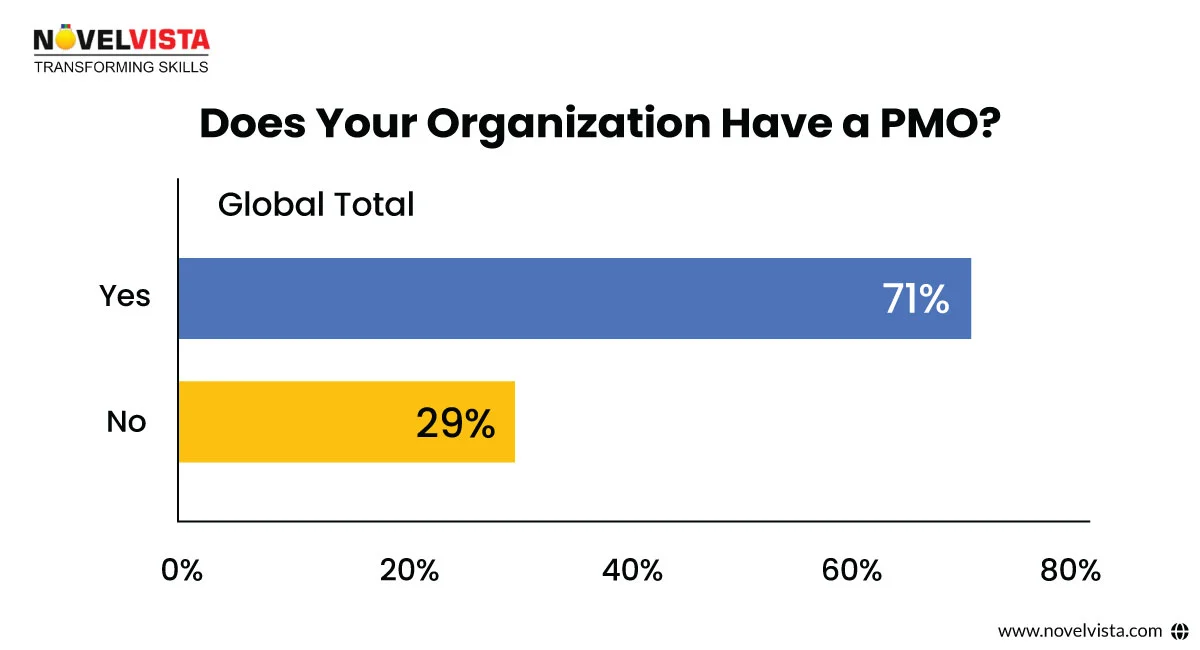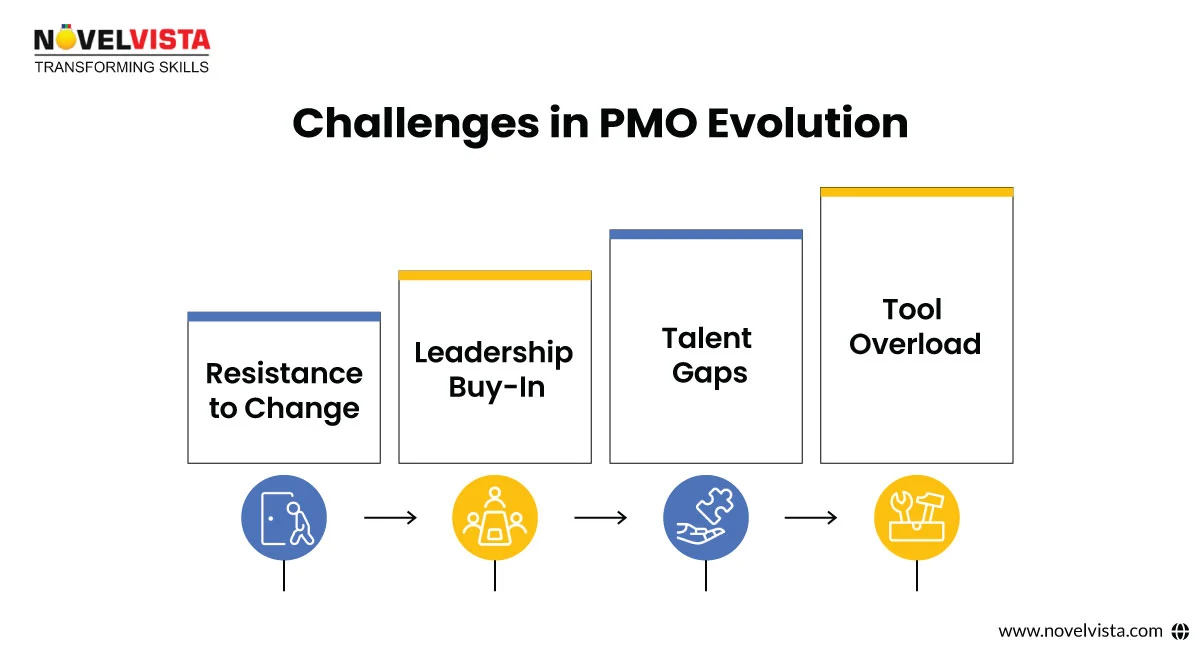When I ask the question to my peers and friends that what does P stands for in PMO, I always got a typical response like "Projects," "Program," or "Portfolio." How about "Power," "Potential," and "Pioneer"? Why I am referring to these three, let me explain. Processes and governance are vital aspects to ensure smoother Project execution and delivery, but strong leadership skills are essential to ensure a successful outcome. The next question would be to what extent leadership skills are critical? The answer is straightforward; the most significant project outcome is mostly down to the leadership skills and the project team's capabilities running the show. I have witnessed this in my career, and I, too, believe this wholeheartedly. Now one may ask, then how about the worst project outcomes? For the worst project outcomes, I always use a single word, "team," and use such words intentionally. Because I believe it's not down to the Project manager or the portfolio manager or maybe the head of the PMO for that matter. I think it's a team effort, and we all know that a successful team will have great leaders. Strong leadership skills have become essential for making a project successful as they can differentiate success and failure.
If someone is looking to improve their PMO or looking to advance their career as a Project Manager, they need to pay strong attention to building strong leadership skills. As per my experience, Project Management Offices led by strong leaders can achieve better results and outcomes. The individuals who have equipped themselves with Strong leadership skills can earn the currency they needed to climb the management ladder.
I have been doing much research on the "importance of Strong leadership in Project Management." I did search this on google, and it throws me 10+ million results. Well, practically, someone cannot go through all ten million-plus details. So, I checked some of the posts and articles, and most of them appear to be a list of attributes that strong IT leaders must-have. It also shows some books, videos that can turn someone into a great leader. The lists are worth a browse, though they are mostly listed a few of the obvious things like "Clear Communicator," "great motivator," "controlling your emotions," but apart from these, those are a good read for anyone. But one thing I observed that all those articles or posts are missing one of the critical elements. Great leaders indeed need to have "integrity" & "delegation" skills, and they also need to be a "great team builder." Still, I believe it's only 20% because the remaining 80% is always either, You, me, we, or us, i.e., the CIO, the Project Manager, and the Project team.Apart from all, it's an individual's USP, DNA*, and culture, which makes you a great or a strong leader.
The difference between success and failure is always you, me, we, or us. Technically there is no book, article, or post that can ever make you a great leader. The mistakes that we made, the lessons we learn from our mistakes, and our success teach us to become great leaders. Overall it's a career-long process, and the leaders never stop learning. It's a journey that a person has to travel through with having lots of exciting ups and downs. I have added an asterisked DNA because it's a question that has been raised for ages that "Are the Leaders born or made?" Well, it's a mix of both. I have personally seen some people are born leaders. They started good, got very good and now they are excellent. If I had to put a number or percentage for born leaders, it would only be 5-10%. Some have given it a go, no matter how hard they try, how many books they read, or how many seminars attend, but due to their nature, they will never make it to the league of the great leaders. If I had to put a number for these categories, it would be 10-15%. I never meant that these people are not so important, but the novice may not represent the epitome of teamwork and leadership. It only serves as an exciting demonstration of multiple roles when needed to achieve or not to achieve a particular task. They are still essential for smoother project execution and delivery, and they become a crucial part of the successful outcome, but they are not the actual leaders. The CIOs have Project Managers, who are not genuine leaders but can buy in "strength" like a commodity by accessing the Project Management as a service market. Here are the attributes of strong leadership like robust vendor governance, effective SLAs, and KPIs that can be bought in from Project Management service partners who can make it look good and sometimes even better.
Based on my experience and observation so far, one can become a strong leader only by "knowing themselves." I have worked with various Project Managers, and only a few of them are self-aware and know themselves well. The rest of the Project Manager's don't seem to be looking entirely into the mirror of themselves. The reason why I am emphasizing the point" knowing oneself/ Themselves" is because if someone is not able to see their faults or not able to see their mistakes, then how will they know where to improve? You can’t make Chicken dumplings from fish, no matter how hard you try or how religiously you follow the recipe. You will end up with Fish dumplings. Some Project Managers' careers are built on a false foundation because they can't see that from where they are starting.
Organization owners need to create a culture that allows honesty and transparency, where mistakes and faults are not punished or penalized. Still, it provides an opportunity to learn from such mistakes and faults. When an organization owner does it, then it encourages immediate acknowledgement and significant correction of such errors. Thus it provides a truthful mirror to the Project Manager, where they get to know themselves well than before. The best way for a Project manager to know themselves is by inviting and, more importantly, listening to the feedback from up and down the command chain. The C-Suite executives usually provide valuable clues in their every single response. I always like to listen, and I always encourage listening objectively, not adding any filter to our perceptions. Don't project your home movie onto the feedback you are being given.
The main strength of a leader becomes clearer through self-awareness. When one realizes that they have fish, not chicken, you start to know and learn what to do with it. So, when you know who you are, what you are capable of achieving when you see yourself where you went, how you can improve, and when you listen without prejudice, that's when you become a more generous and strong leader, as I have mentioned earlier that it's a career-long process. You won't be as great or as strong today as you will be in the future, but you already knew that with self-awareness.
Let’s be honest—how many times have you heard PMO explained as Project Management Office and believed, “Okay, so it’s the people who analyze Gantt charts”? But here’s the table turner: what if the “P” in PMO stood for something much more strong—Power?
That’s right. Power to modify, align, influence, and most importantly—deliver. The modern PMO is no longer a passive reporting function; it’s a proactive force of planning, innovation, and intelligent decision-making.
Let’s analyze that evolution and explore how the PMO is becoming the force behind organizational success.
🚀 Empower teams and align strategy with execution.
At its core, the PMO was created to bring structure and stability to project execution. But structure alone doesn’t deliver value. What organizations now need is Power—not just in the exact sense of control, but in the strategic sense: the ability to prioritize the right initiatives, support innovation, and adapt to change in real time.
The evolved PMO combines with business objectives, becoming a nerve center that ties together Information Management, Change Management, and Organizational Strategy. This is where true value delivery begins. It's no longer about overseeing timelines—it's about accelerating transformation.
The shift is already underway.
PMI’s latest research shows that 71% of organizations with a mature PMO report significantly higher success rates on strategic initiatives. Even more telling—60% of PMOs now participate directly in strategy formulation. The trend? Clear as day. PMOs are stepping into leadership territory.
As business environments become increasingly volatile, the demand for adaptive governance is rising. The PMO is morphing into the anchor of stability and agility. In fact, many organizations now see the PMO as a catalyst for value creation—especially in environments integrating Agile, hybrid delivery models, and cross-functional teams. Want to build a future-ready team? Explore important DevOps Engineer Skills to bring the right balance of speed and structure.

So what does "power" really look like in this context?
We’re not talking top-down authority. We’re talking about Power Management in a more modern sense—the ability to channel focus, energy, and effort into initiatives that matter. A powerful PMO doesn’t just supervise—it grants authority. It clears obstacles. It connects planning to execution. It tells the why, not just the what.
Now, with great power comes—yes, you guessed it—challenges. But the good news? Smart PMOs are already finding ways to rise above them.
People don’t love change. Traditional mindsets often see PMOs as rigid, process-heavy functions. The solution? Start with coordination. Build trust by connecting PMO activities directly to business goals. Bring in soft skills and coaching mindsets.
Without C-suite support, a PMO can get stuck on the minor elements. Modern PMOs showcase their result using real business metrics. They present more than progress—they present value. Tools like benefit realization mapping and business case tracking help position the PMO as a strategy enabler.
Yesterday’s PMO relied heavily on technical project managers. Today? You need storytellers, business strategists, and agile champions. Upskilling is the most important. Courses like the PRINCE2® Foundation certification help PMO teams sharpen the skills required to lead change confidently.
Disparate tools and redundant processes slow things down. Modern PMOs streamline, integrate, and automate where possible. The result? More time spent on insight and innovation, less on admin.
When PMOs overcome these barriers, they move from being seen as process enforcers to strategic advisors—and that’s the real win.

The landscape is changing fast. Digital transformation, AI, and hybrid work are now baked into the business fabric. The PMO has a unique opportunity to take the lead in Innovation in Management , becoming not just a part of change but the driving force behind it.
From adopting lean governance to championing knowledge-sharing cultures, PMOs are in the perfect position to spark innovation that scales. Want proof? Look at how high-performing PMOs are embedding Knowledge Management into every phase of delivery—ensuring that lessons are learned, applied, and built upon, rather than forgotten.
The PMO of the past kept score. The PMO of today changes the game.
It’s time we stop thinking of the PMO as just a reporting function and start seeing it for what it truly is: a powerhouse of Power Management, strategic support, and innovation.
If you’re serious about evolving your PMO into a force that doesn’t just support transformation—but drives it—start by aligning it with business outcomes, empowering your people, and leading with purpose.
And if you’re looking to build this capability from the ground up? NovelVista has the training and transformation tools to help your PMO lead with power and purpose.
Confused about our certifications?
Let Our Advisor Guide You